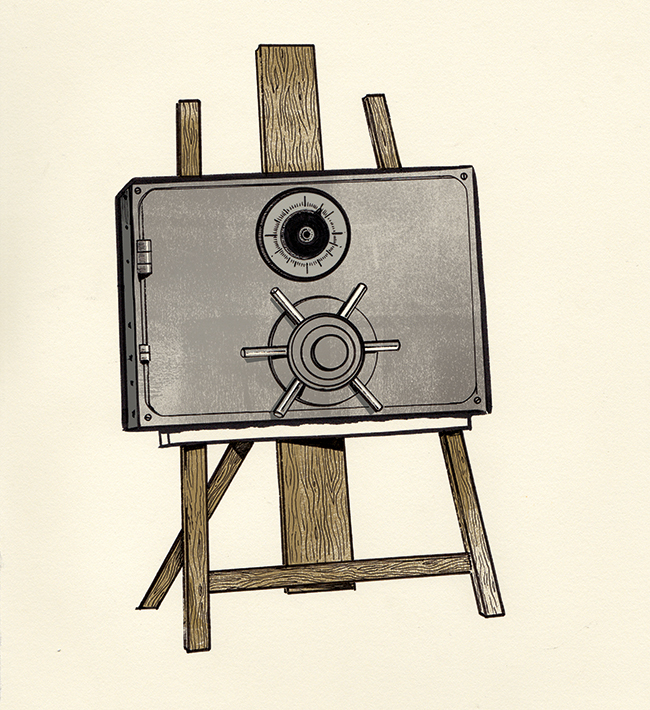ZEITGUIDE TO THE ART MARKET

Gallery owners, advisors and art collectors from all over the world are in New York this week for the Armory Show at Piers 92 and 94 along the Hudson River and its attendant art fairs, including the Art Dealers Association of America (ADAA) hosted Art Show and the Independent New York. In the words of the Armory’s new executive director, Benjamin Genocchio, this is “the start of the year, the start of the season” for the art world.
So what can we expect from the coming year in the art business?
Art has been an alternative investment strategy in recent years, with interest rates low and the stock market sluggish after the recession. Art prices, by contrast, had been going up 10% to 20% a year and financial firms — including Citigroup, JPMorgan, Morgan Stanley and Goldman Sachs — made it easier to use art as collateral for other loans. The impact of this influx of capital was evident at last year’s Armory Show, which closed $200 million in sales.
Poor returns at art auctions this year have some fearing the art market is headed for a slowdown. Phillips failed to sell half of the works at its latest auction on Monday. Sales are down 33% this year at Sotheby’s. Even billionaire collector Eli Broad, who just opened a contemporary art museum in downtown Los Angeles to showcase his collection, says it’s time for a correction in the art market.
Early results at this week’s shows in New York, which will run until Sunday, have been mixed. Paris/Salzburg based dealer Thaddeaus Ropac, which some experts look at as a bellwether of the success of any art fair, had a slow start to its week at the Armory Show. New York based Sean Kelly Gallery had strong early sales at the Armory Show, including $300,000 for Kehinde Wiley’s “Equestrian Portrait of Philip III.” (The piece is an interesting contrast to the 1634 portrait by Diego Velázquez, which which it shares its name.) And early sales at the ADAA Art Show have included $200,000 for a Hernan Bas folding screen, The Fourth of June, Eton, and $450,00 for a 1962 Beauford Delaney.
The mixed results for some galleries may be less of a sign of a slowing market and more an early indicator of where collectors’ tastes are headed this year. As ZEITGUIDE friend Elana Rubinfeld told us, competition for works from young, emerging artists has been as strong as ever. Among the works coveted by the collectors she was shopping for were the large scale, expressive works ofJannis Varelas and Mira Dancy.
While the jury is out on how strong of a year it will be for the art world, it’salways fun to look at what’s out there. Here’s what we’ve got in our sights:
Contemporary African Art: A special area of focus at the Armory Show this year is the emerging curators, artists, galleries and art spaces from Africa and the African diaspora. Highlights include the found object collages of Elias Sime, sculptures by Yinka Shonibare MBE, Kay Hassan’s paper constructions exploring themes of migration and dispossession and a special project fromKaro Akpokiere where he’s creating a new series of prints about the art fair on-site.
Habana: A sign of the thawing relations with Cuba, this is the first Cuban gallery to ever participate in the Armory Show. It is showing the work of three Cuban artists, Ariamna Contino, Carlos Garaicoa and Ivan Capote.
You Can Look, But Not Buy: Though not for sale, there were a few performance pieces that resonated both with fair goers and across social media. Romina de Novellis’ performance piece The Cage had the artist confined to a wire cage, slowly weaving white roses into the frame to obscure her naked form from passing eyes. Jonathan Schipper’s conceptual work Slow Motion Car Crash features a car attached to a hydraulic piston that will slowly crush it against a wall over the course of four days. You can find it at Pier 92 this week. It reminded us of the recent news of one of Google’s driverless cars getting into its first crash.
